Manuel Guizar-Sicairos
Paul Scherrer Institute, École Polytechnique Fédérale de Lausanne
Diffusion Active Learning: Towards Data-Driven Experimental Design in Computed Tomography
Apr 04, 2025Abstract:We introduce Diffusion Active Learning, a novel approach that combines generative diffusion modeling with data-driven sequential experimental design to adaptively acquire data for inverse problems. Although broadly applicable, we focus on scientific computed tomography (CT) for experimental validation, where structured prior datasets are available, and reducing data requirements directly translates to shorter measurement times and lower X-ray doses. We first pre-train an unconditional diffusion model on domain-specific CT reconstructions. The diffusion model acts as a learned prior that is data-dependent and captures the structure of the underlying data distribution, which is then used in two ways: It drives the active learning process and also improves the quality of the reconstructions. During the active learning loop, we employ a variant of diffusion posterior sampling to generate conditional data samples from the posterior distribution, ensuring consistency with the current measurements. Using these samples, we quantify the uncertainty in the current estimate to select the most informative next measurement. Our results show substantial reductions in data acquisition requirements, corresponding to lower X-ray doses, while simultaneously improving image reconstruction quality across multiple real-world tomography datasets.
Single-shot X-ray ptychography as a structured illumination method
Oct 24, 2024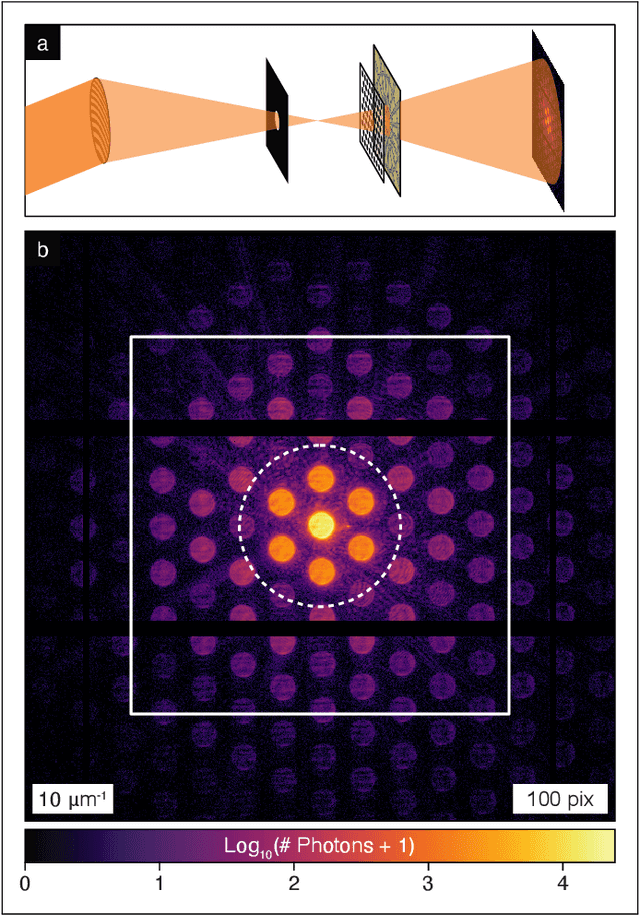
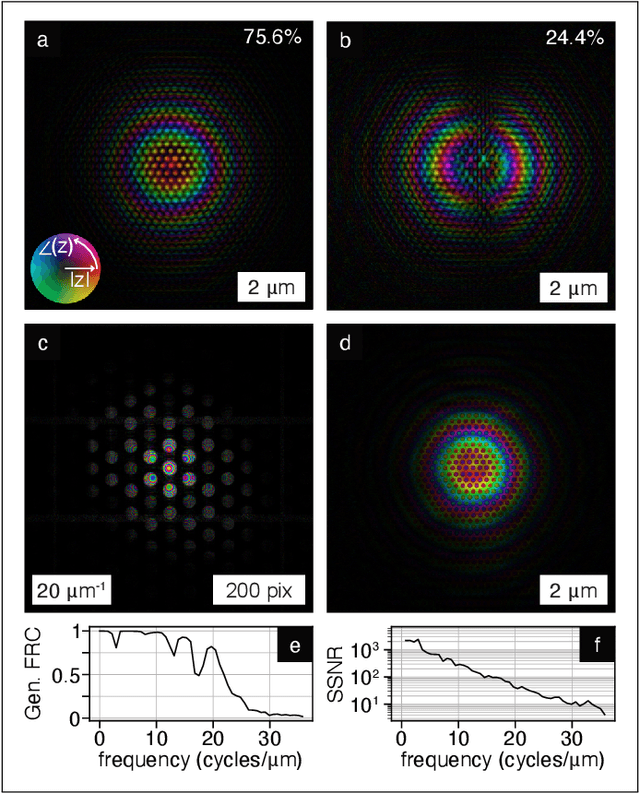
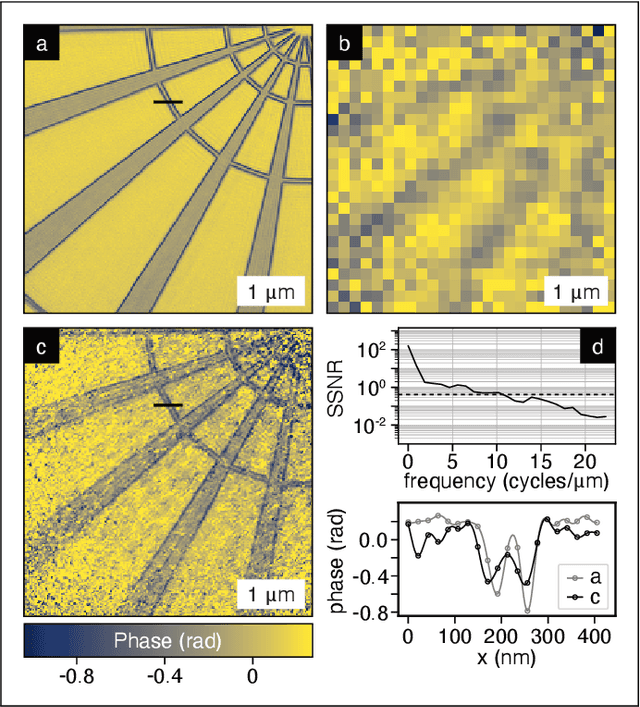
Abstract:Single-shot ptychography is a quantitative phase imaging method wherein overlapping beams of light arranged in a grid pattern simultaneously illuminate a sample, allowing a full ptychographic dataset to be collected in a single shot. It is primarily used at optical wavelengths, but there is interest in using it for X-ray imaging. However, the constraints imposed by X-ray optics have limited the resolution achievable to date. In this work, we reinterpret single-shot ptychography as a structured illumination method by viewing the grid of beams as a single, highly structured illumination function. Pre-calibrating this illumination and reconstructing single-shot data using the randomized probe imaging algorithm allows us to account for the overlap and coherent interference between the diffraction arising from each beam. We achieve a resolution 3.5 times finer than the numerical aperture-based limit imposed by traditional algorithms for single-shot ptychography. We argue that this reconstruction method will work better for most single-shot ptychography experiments and discuss the implications for the design of future single-shot X-ray microscopes.
Accelerated deep self-supervised ptycho-laminography for three-dimensional nanoscale imaging of integrated circuits
Apr 10, 2023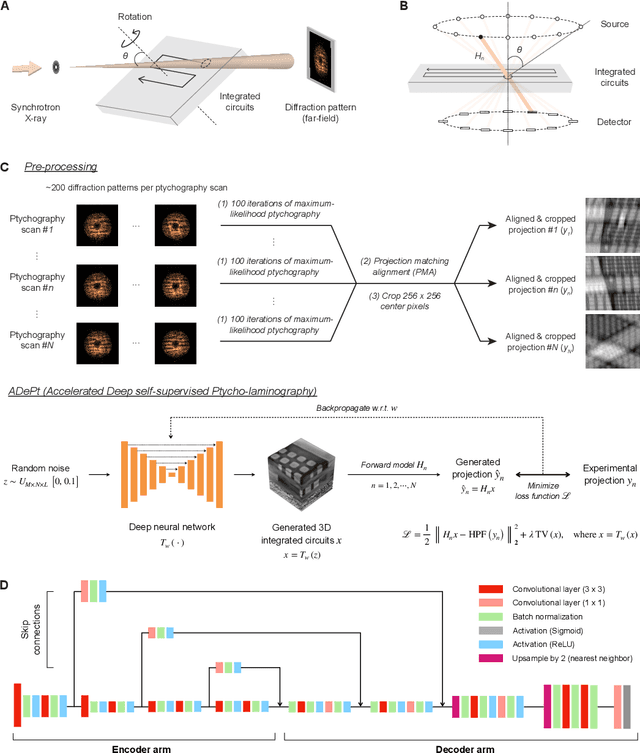
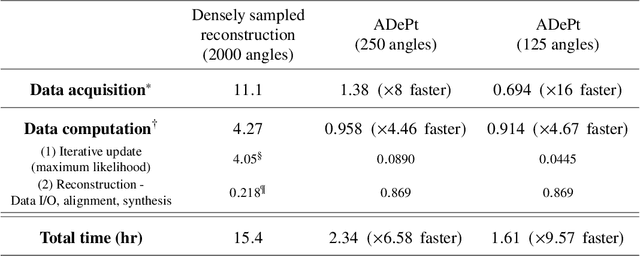
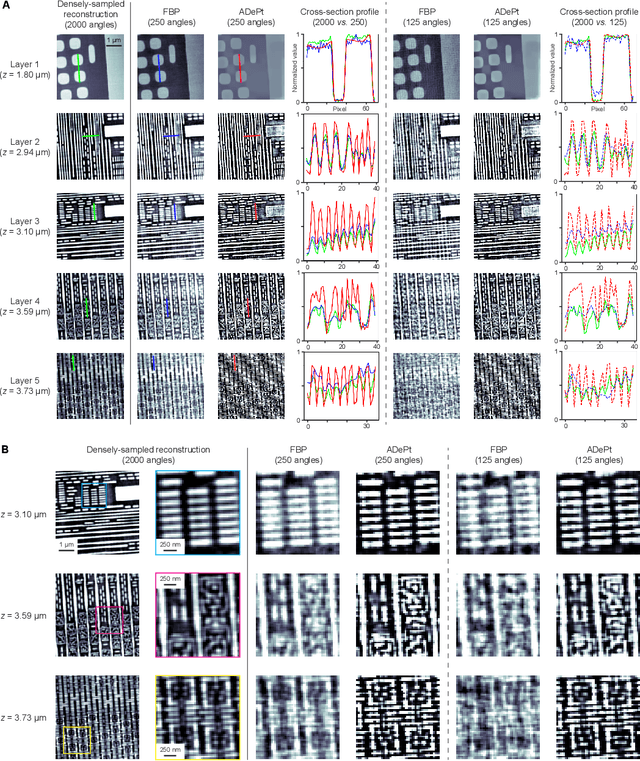
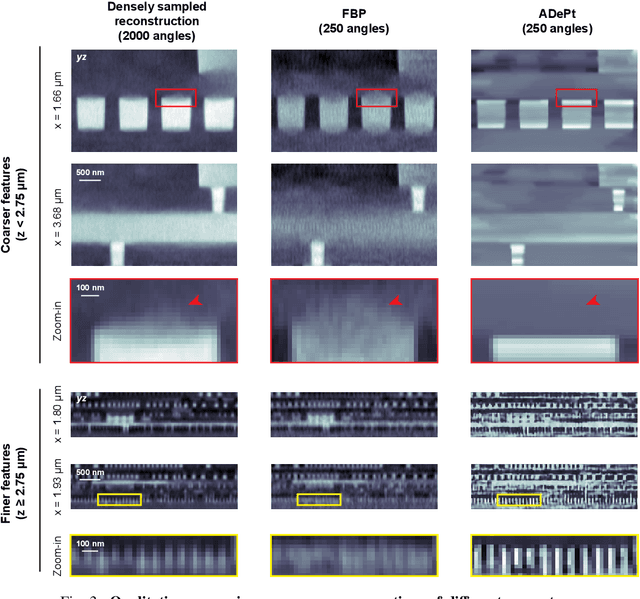
Abstract:Three-dimensional inspection of nanostructures such as integrated circuits is important for security and reliability assurance. Two scanning operations are required: ptychographic to recover the complex transmissivity of the specimen; and rotation of the specimen to acquire multiple projections covering the 3D spatial frequency domain. Two types of rotational scanning are possible: tomographic and laminographic. For flat, extended samples, for which the full 180 degree coverage is not possible, the latter is preferable because it provides better coverage of the 3D spatial frequency domain compared to limited-angle tomography. It is also because the amount of attenuation through the sample is approximately the same for all projections. However, both techniques are time consuming because of extensive acquisition and computation time. Here, we demonstrate the acceleration of ptycho-laminographic reconstruction of integrated circuits with 16-times fewer angular samples and 4.67-times faster computation by using a physics-regularized deep self-supervised learning architecture. We check the fidelity of our reconstruction against a densely sampled reconstruction that uses full scanning and no learning. As already reported elsewhere [Zhou and Horstmeyer, Opt. Express, 28(9), pp. 12872-12896], we observe improvement of reconstruction quality even over the densely sampled reconstruction, due to the ability of the self-supervised learning kernel to fill the missing cone.
 Add to Chrome
Add to Chrome Add to Firefox
Add to Firefox Add to Edge
Add to Edge